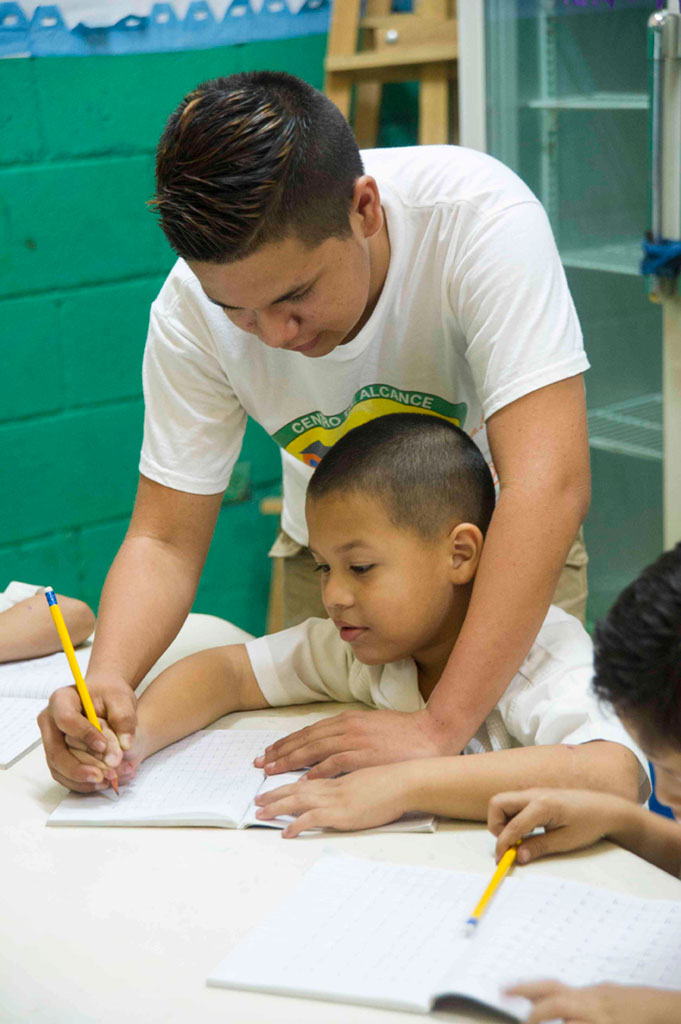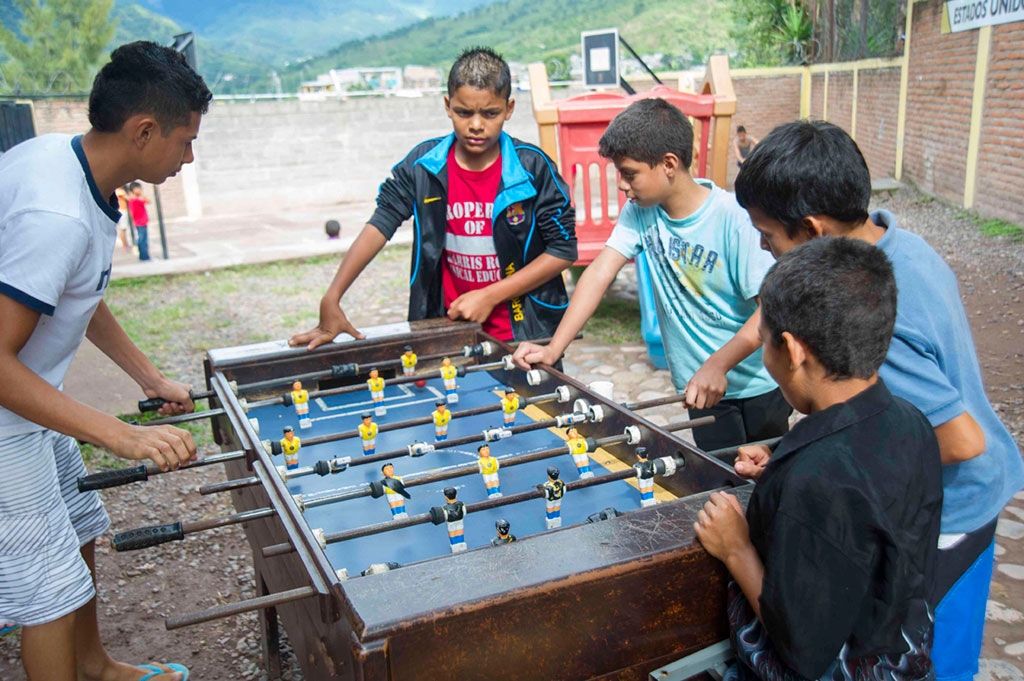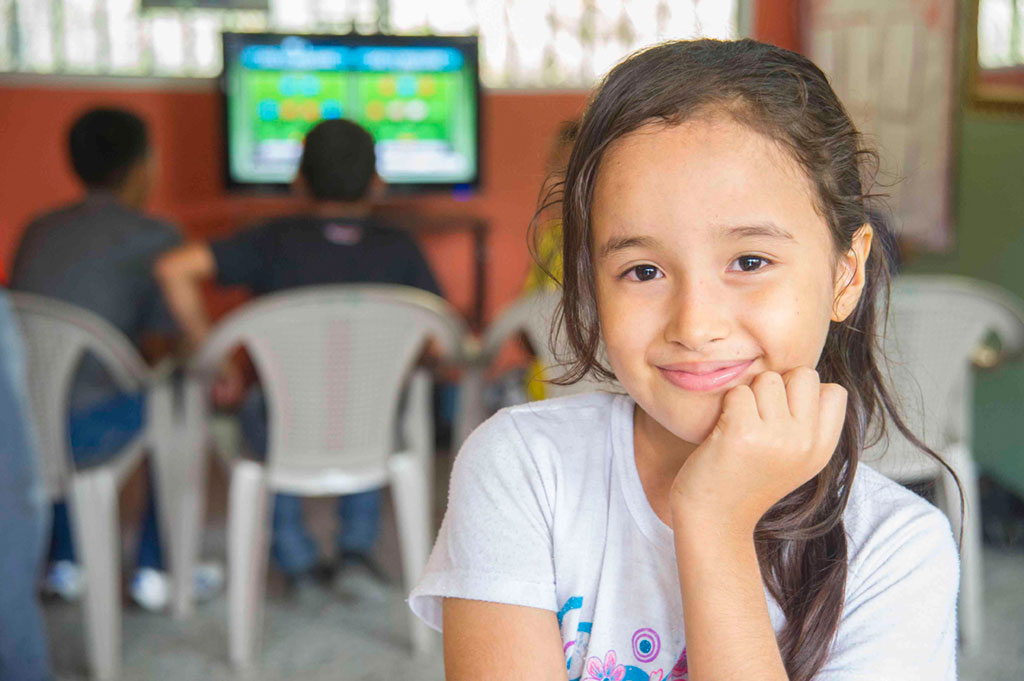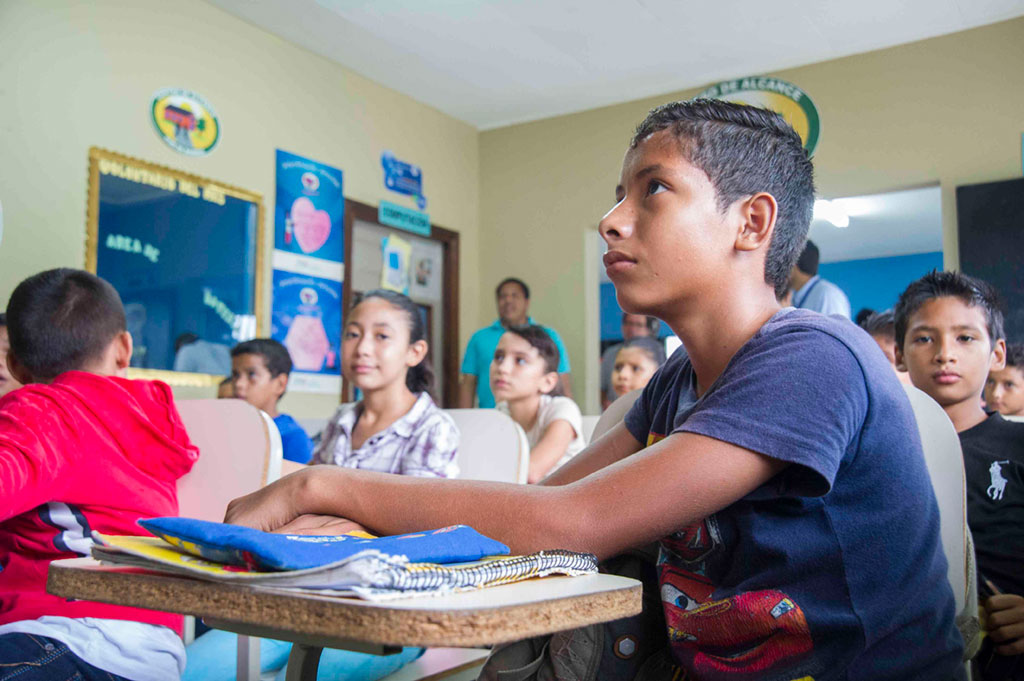Amidst a storm of gang, drugs and violence, youth in at-risk neighborhoods are finding security, opportunity and hope at nearly 50 community outreach centers around Honduras. From English classes to sports and job training, these centers are preventing violence and changing lives.
Tegucigalpa, Honduras—Marco Antonio Ferrera is 13 years old and lives alone in Las Pilas, a community with violence rates well above average in Honduras, considered among the world’s most dangerous countries. Marco’s father works in the United States. He sends money to his son, which helped Marco, then just 10 years old, build the house he lives in.
Marco says his dream is to have a home, be with his family and live well—a dream that can be difficult to attain in his neighborhood.
In at-risk communities around Honduras, stories like Marco’s are common. Caught between gangs, drug-related violence and poverty, and sometimes with parents living in the United States, youth struggle to find opportunities for success and paths away from violence.

“These are the neighborhoods where no one wants to go and, at times, have been completely thrashed by violence,” says Miriam Canales, Coordinator of the Northern region for Alianza Joven Honduras (Youth Alliance Honduras), a youth violence prevention program working in the country’s most at-risk communities.
For kids like Marco, Alianza Joven Honduras provides a key resource for them to develop, thrive and find an escape from violence. The program is funded by the U.S. Agency for International Development and implemented by Creative Associates International.
Through its 46 youth outreach centers in communities in seven Honduras cities, youth access safe spaces for recreation, tutoring, music lessons, life skills, vocational training and volunteering. At the core of the outreach center methodology are positive messages of nonviolent conflict resolution, youth empowerment and community.
The outreach center methodology “makes me feel better,” says Marco. “I have more friends, more opportunities. I learn many things. I have fun with my friends. And I am always glad to volunteer here in the outreach center.”
Overseeing 27 centers in four municipalities, Canales has seen many cases like Marco’s and has witnessed the positive effects of the outreach centers on a large scale for youth and communities nationwide.
“It is a place of hope inside what is often a major storm,” she says.
Activities that empower

On the wall of every outreach center are the guiding principles of this prevention methodology, including forming values, a creative use of free time, managing opportunities, volunteerism, strengthening school performance, building capacity to work, sustainability and developing a life plan.
Based on these principles, the centers’ activities support youth holistically, from work skill development like sewing or cutting hair to school tutoring, sports, music and life skills coaching.
The centers, as Canales says, are a place for kids to “develop their intellectual capabilities, where they can participate in workshops, become a little more dynamic and improve their self-esteem.”
For Sofia Umanzor, a teenager in San Pedro Sula who has lost friends to the city’s violence, the outreach center in her community has provided a safe space “keeping her off the streets” and has given her and her peers a new sense of self-esteem.
“We are very proud because he have had workshops on beauty care, English, computers and crochet,” she says. “Before, we didn’t have any of these skills.”
Community at the heart

The outreach center methodology’s success has prompted a coalition of partners including the government of Honduras, the private sector and local foundations to contribute their time, energy and financial support. But a major key to success, say Alianza Joven staff, is meaningful community engagement
Community coordinators and volunteers, primarily youth who have benefited from Alianza Joven’s violence prevention programs, manage the outreach centers. They host talent nights and other events for the greater community, building trust and support among parents and other community members who are witnessing the positive changes in their neighborhoods.
Germán Pérez, Coordinator of the Las Pilas outreach center, makes it a point to spread the word and bring in more and more youth to the center. Last quarter, he says, 400 youth used the center’s services.
“We tell them: ‘Invite other people so they get to know us, we get to know them and together we can promote the outreach center,’” he says.
Pérez says he and his fellow coordinators and volunteers are “selling” the idea that the outreach center is a place of opportunities. The more young people that walk through the doors, the safer and more vibrant the community becomes.
Volunteers—who Canales calls “the heart of the outreach centers”— give their all and ask little in return. What they really expect, she says, is a better community.
Real results

The outreach centers are making a positive difference in the lives of youth like Marco and Sofia, but on a larger scale, communities are seeing a reduction in the rates of violence crime.
In 2011, the city of Choloma has a homicide rate of 94.5 per 100,000 residents, says Cristhy Orellana, a member of Choloma’s Municipal Violence Prevention Committee. At the end of 2013, the rate had dropped to 68.3 homicides per 100,000 residents—more than a 20 percent decline.
“With this hard number, we have demonstrated that our integrated approach, along with the outreach centers, is demonstrating important medium-term results,” says Orellana.
A recent study by Vanderbilt University’s Latin American Public Opinion Project found that the outreach center methodology as part of community-based violence prevention efforts is improving residents’ feelings of security and is a cost-effective approach to stemming violence in Honduras and other Central American countries.
Communities that were once ruled by gangs and hardly accessible to government authorities or outside groups are now hosting government officials and business leaders for outreach center talent shows.
“I think one of the most significant results that we have demonstrated is that we can work in the most violent communities in the country,” says Salvador Stadthagen, Director of Alianza Joven Honduras. “A former Minister of Security told us that he does not know how we do it. A lot of other programs have tried to go in but they haven’t been sustainable.”
With every new outreach center and every youth involved, Alianza Joven Honduras is “planting the seeds,” says Carlos Ramón Guzmán, an Outreach Center Officer for the project who began this work at 18 years old. One day, he says, these seeds will blossom so that “every at-risk community becomes a community of hope.”
With reporting by Emanuel Rodriguez
